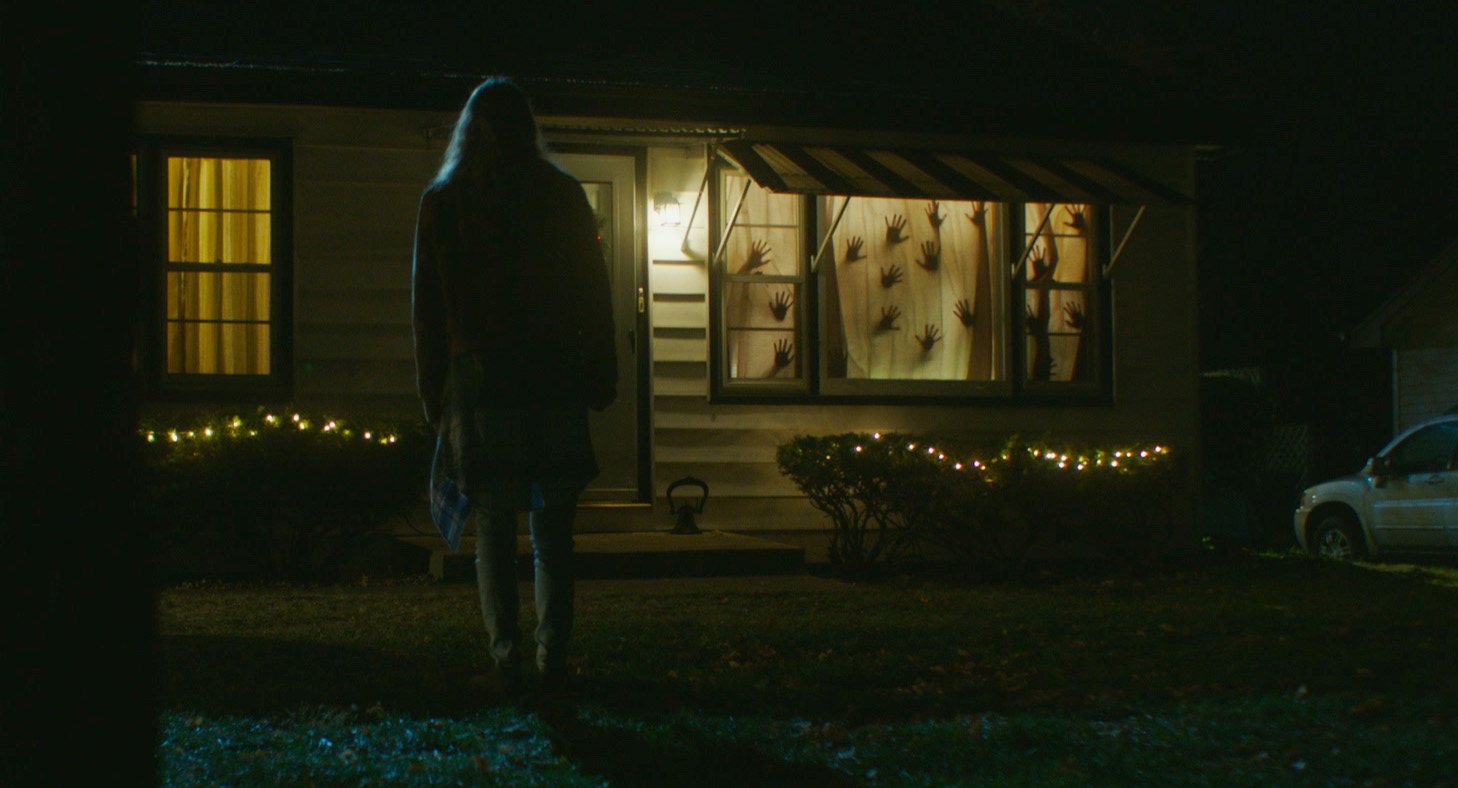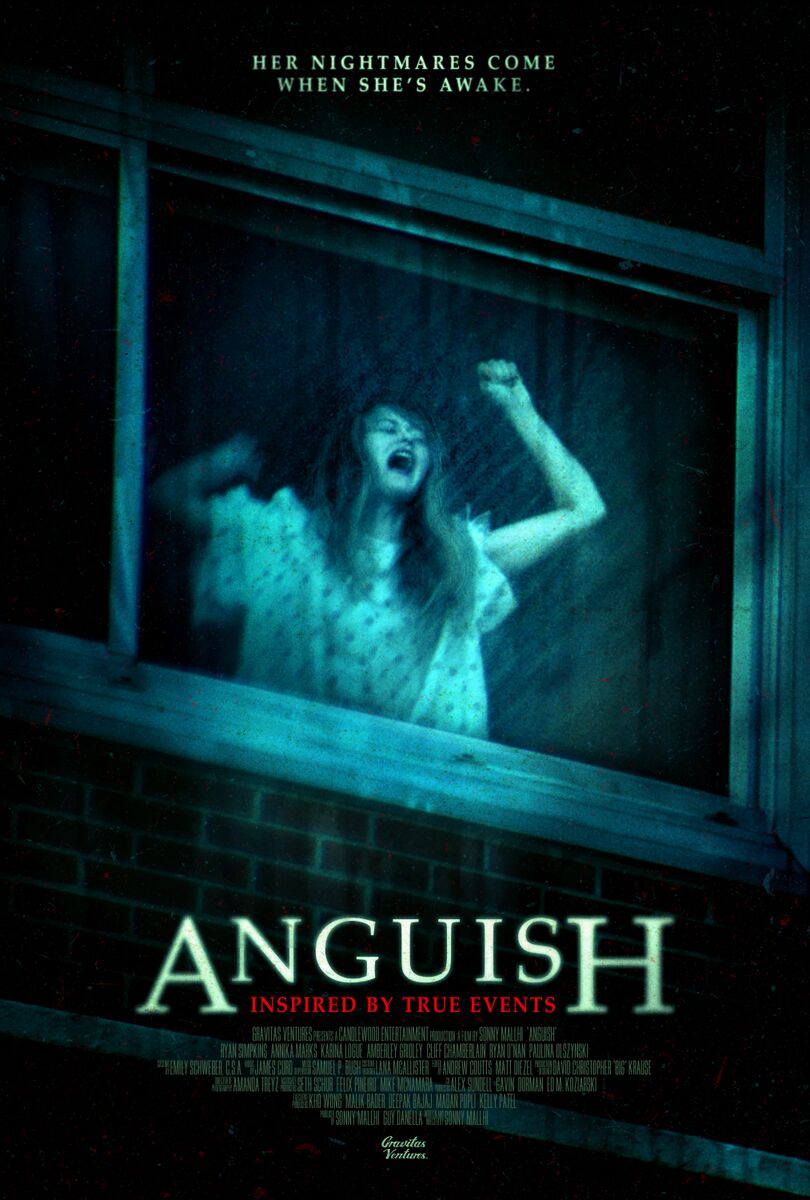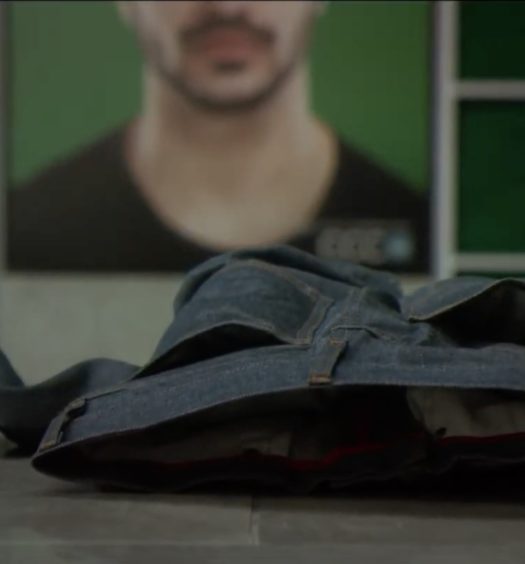There’s been an explosion of what I like to call “hipster horror” in the last few years. You know what I’m talking about–small budgets, realky hip-looking actors, long periods of silence, tracking shots showing characters not doing much at all, and maybe only a few minutes of interesting content in a 90-minute film. I won’t name names, but you immediately know what you’re getting into with these films, and they always buckle under the weight of their pretension. Luckily for us, Anguish is not one of those films. It takes what those films do well, like a ponderous sort of tension and visual beauty, and adds in the elements they’re missing, like engaged pacing, exposition, and things of interest occurring.
Anguish is a rare thing among horror movies. It’s a movie about teen angst, but is actually interested in exploring the cause and effect of that angst instead of using it as window dressing. It’s a movie about women dealing with their problems on their own and raising their kids the best they can. It’s a film that grapples with mental illness, and shows how tough it is to get help when you don’t feel comfortable in your own head. Somewhere in there, there’s also a horror movie about possession, which nearly derails the film about two-thirds of the way through. However, Anguish manages to save itself with an incredibly satisfying denouement and ending.
The film follows Tess, a teenage girl living with her mother Jessica. Tess is like any other affected teenager–she spends a lot of time alone, skateboarding, wandering the woods and listening to folk music. Tess is also dealing with mental health problems. You see her take a rainbow of different colored pills and the concern in Jessica’s expressions and body language is ever-present. Director Sonny Mallhi has done good work here directing the relationship between Tess and Jessica, and Ryan Simpkins and Annika Marks offer believably nuanced performances. The love is clearly there between the two, but it’s obvious Tess is dealing with a lot–even before she gets possessed by a dead girl.
The film begins with a cold open that dives into the teenage trouble/mother-daughter relationship themes, but I’ll leave it to you to discover how effective the intro is. It features one of the year’s saddest, most abrupt scares, and it’s a testament to Mallhi’s ability to direct performances and his actors’ abilities that said scare is as effective as it is with only a slight build-up.
Mallhi’s command of the film’s visuals must also be commended. DP Amanda Tyrez offers us sumptuous sights of the Midwest in autumn and captures the delicateness of the mother-daughter relationships with her shots. There’s a lot more here than just pretty visuals, as well–Mallhi uses transitions to keep you engaged, and early on, they are very effective at keeping you in Tess’ headspace. Watch for one in particular in a wide shot as she sits by the lake early in the film. I must also take a moment to commend the film’s folky soundtrack. Few other horror films sound like this, and the soft acoustic tones that accompany many of Tess’ scenes give them a distinct feel. They also help place us into Tess’ head–as we experience the stresses of Tess’ life with her, we feel her respite when she gets to put her headphones in and escape.
Anguish, for all its charms, stumbles as it runs on. The film’s first half is fantastic, and explores what it would be like for a troubled teen and a mother raising her by herself* to deal with a developing supernatural situation. Simpkins and Marks’ performances sell the show here, along with Mallhi’s consistent willingness to throw the audience a bone. Spooky stuff happens within the first twenty minutes of this movie, in direct opposition to that “hipster horror” style I mentioned earlier. The pacing is reserved at first, but after a few minutes of meeting Tess, the film moves along crisply. But the film starts to abandon its strengths as it plays the possession angle more heavily. There’s a good amount of exposition that feels unearned at this point in the film, and it makes a smart move by going back to the mother-daughter stuff after a quick consultation by the local priest. A “new” character gets involved, adding a whole new dimension to the mother-daughter relationship. Although the new dynamic comes with some shoehorned exposition itself.
Luckily, the film eventually shrugs off these weaker sections with its incredible denouement and ending. Most horror films are content to abruptly end once the trauma is over–they don’t show characters picking up the pieces or dealing with how their lives have changed. Anguish shows that teens can adapt to the stresses of mental illness with positive forces in their lives, and it’s just awesome to have the chance to exhale all the tension that had been building for the past 80 minutes. Anguish’s ending is proof that it’s a film made with empathy and honest emotion, something that can’t be said for a lot of horror. A treat for those who are still young and troubled at heart.
*Tess’ father is in the movie, but he’s in the military and is mostly seen on a Skype call. He’s in the move for a few minutes in person at the end, but on the whole, this is Simpkins’ and Marks’ movie.
Anguish will be available on iTunes and other VOD platforms on December 18th. Buy/Rent it now: https://itunes.apple.com/us/movie/anguish/id1052267119
Anguish [Review]
Empathetic Horror
Anguish is the rare film that actually sees its characters struggle, grow, and change as they deal with the supernatural, rather than just end up dead. An interesting horror spin on teenage angst.
































